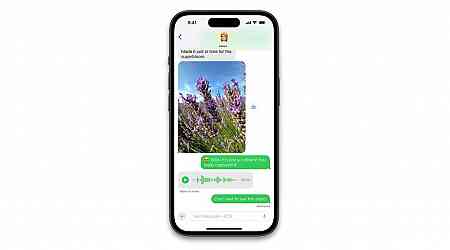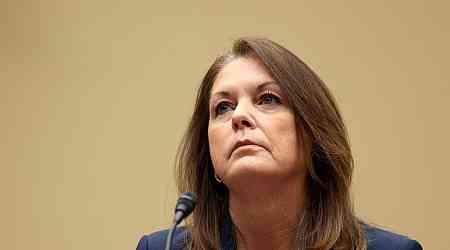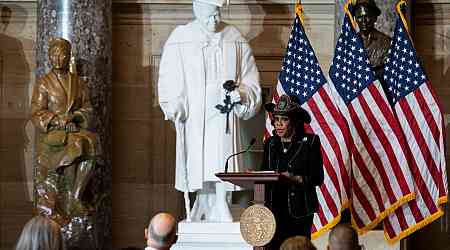
My visit to Daytona Beach took place in the midst of the COVID-19 pandemic. In November of 2021, my husband, Bill, and I, armed with disinfecting wipes and lots of masks, boarded a plane for the first time in over a year. We were headed to see the newly unveiled statue of American educator and humanitarian Mary McLeod Bethune that was due to travel up the East Coast from Florida, with a stop in South Carolina before arriving at its new home in Washington, D.C., in the Capitol Building’s Statuary Hall. What drew us out was my unshakable need to see Bethune’s chiseled commemoration in her hometown. I wanted to see it feted and celebrated by those who had strategized for years to make sure she would be the Floridian chosen to represent the state in Statuary Hall. I wanted to get a sense of who would show up to see her and how they would feel when they saw the finished version.
[time-brightcove not-tgx=”true”]I had heard that it was magnificent, in a highly detailed, impressive, even haunting sort of way. I wanted to learn something about what the residents of the town thought about the long and expensive process that led to their organizing across lines of race, geography, and class to honor their hometown daughter. I wanted to hear directly what, if anything, those who might be in the viewing hall with me thought about her, a Black woman born of parents who were enslaved, displacing the Confederate general Edmund Kirby Smith as one of the two statues to represent Florida to the nation.
Though Bethune did not truly know the day would come when a woman of African descent might legitimately vie to be elected president of the United States, as an advisor to four U.S. presidents herself, she believed in the promise and power of Black women to survive, thrive and lead at the highest levels of the federal government. And though she was unelected to any office, this statue of Bethune was a grassroots organized acknowledgment of her significance and impact on both federal policy, and the lives of Black citizens.
Born in 1875, as the 15th of 17 children to sharecropping parents, and raised in the Jim Crow South in Maysville, South Carolina, Bethune’s path to influence and commemoration in the nation’s capital was unlikely. Yet, in 1928, President Calvin Coolidge named her a delegate to a conference addressing child welfare in Washington, DC. She was the only Black person invited to take part.
A year later, in 1929, Herbert Hoover asked her to serve on the National Commission for Child Welfare where she helped to design national surveys on health conditions, infant mortality, and public health programs and to the establishment of the short-lived Child Health Day, programs to professionalize training for midwives, the passage of child labor laws, and vaccination programs to eliminate smallpox and diphtheria. In 1936, President Franklin Delano Roosevelt appointed her to the National Youth Administration (NYA), a federal agency created as part of the Depression-era Works Progress Administration (WPA). In charge of the NYA’s “Negro Section” she was the first Black person to lead a federal agency. In 1945, President Truman appointed her along with W.E.B. Du Bois and Walter White to attend the planning conference for what would become the United Nations.
Read More: 100 Women of the Year: Mary McLeod Bethune
With her story in my mind, I had prepared for the trip as scholars do when we leave home to research something. I knew which archives in the area were open and how long a quick stop in them would take if I wanted to meet librarians and archivists. I knew where Bethune’s house was, as well as her grave, and had planned a day for Bill—who good-naturedly offered to drive us around during the three-day sojourn—and me to visit her statue, see the library at Bethune-Cookman University, tour her former home, and pay our respects at her final resting place before heading off for dinner and a chat about what we had seen. Armed with my iPhone, Google Maps, and weeks’ worth of research notes, we pulled into the parking lot of the exhibition center where Bethune’s statue was open to the public.
This trip was about breadth, not depth, and though I knew I wanted to see the statue, I was thinking of it as a sort of stop just to check this one thing off my list before moving on to the next thing. That is why I can’t fully explain what happened when I turned the corner and moved closer to the 11-foot mountain of marble. I found her eyes with mine; it was as if there was a blood-pumping heart. When I realized there were tears rolling down my cheeks, when I felt a swell of emotion that may have been appreciation or simply an understanding of what it meant for such a statue to exist, such a woman to have lived, for such an honor to be bestowed. The statue is chiseled from marble mined from the same quarry, the same vein of marble, that Michelangelo used to make his statue of David in the early 1500s. It is still stunning now. This is the last piece of the vein of pure white statuary marble from that quarry and it is so precious and difficult to attain that other artists offered to pay two or three times the cost to acquire the 11.5-ton block before the master sculpture Nilda Comas could even begin sculpting it. The resulting statue tips the scales at 6,129 pounds—3 tons. Michelangelo’s David was the Alpha form shaped from that specific marble, and Comas’s Bethune is the Omega.
I know it all sounds a bit like a scene from a not very good movie, the kind where the soundtrack begins to swell to prompt listeners that something important is happening, that emotions are being called forth. The longer I looked into those eyes, the closer I came to losing restraint. As it was, the act of holding back the “ugly crying” was turning into enough of a challenge that I started both holding my breath and calculating the distance to the nearest door, just in case I had to make a fast exit lest I embarrass myself. I stayed indoors, but with my stomach and throat fluttering with the effort of containing unstable emotion.
Calm returned as I stopped looking at her eyes and focused hard on her chic ankle boots with their little sculpted pearl buttons, the smooth curve at the bend of the stone walking cane she held, and the way the sculptor chiseled marble in a way that made it seem to drape and lie as if made of fabric, not stone. I also took in the black rose clutched in her stone hand. It had been sculpted from black marble from Spain. In 1927, Bethune visited a garden in Europe filled with roses displaying a rainbow of colors. She saw it as an interracial garden and had a vision of how all people could peacefully thrive together, side by side. Sometimes she would speak about a “people garden” and explain that the people of the world were like flowers growing in a garden. Red, yellow, small, or tall, all were different, but each was lovely.
Once, a child who heard her describe this world said Black people couldn’t live in a people garden, because there weren’t any black flowers. Bethune replied, “Just because you have not seen a thing doesn’t mean it doesn’t exist.” People started to call Bethune the Black Rose, and she started referring to her students as black roses. She had seventy-two black rosebushes shipped from Switzerland to Bethune-Cookman to drive home the point.
Excerpted with permission from A Passionate Mind in Relentless Pursuit: The Vision of Mary McLeod Bethune by Noliwe Rooks (Penguin Press, 2024).


























